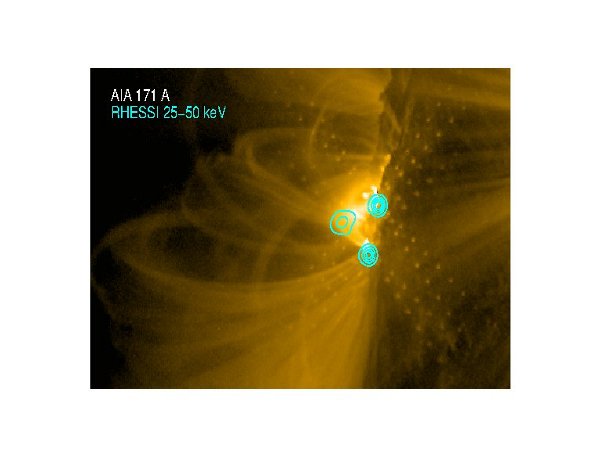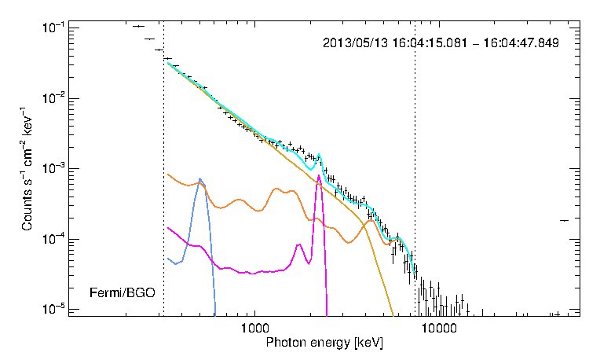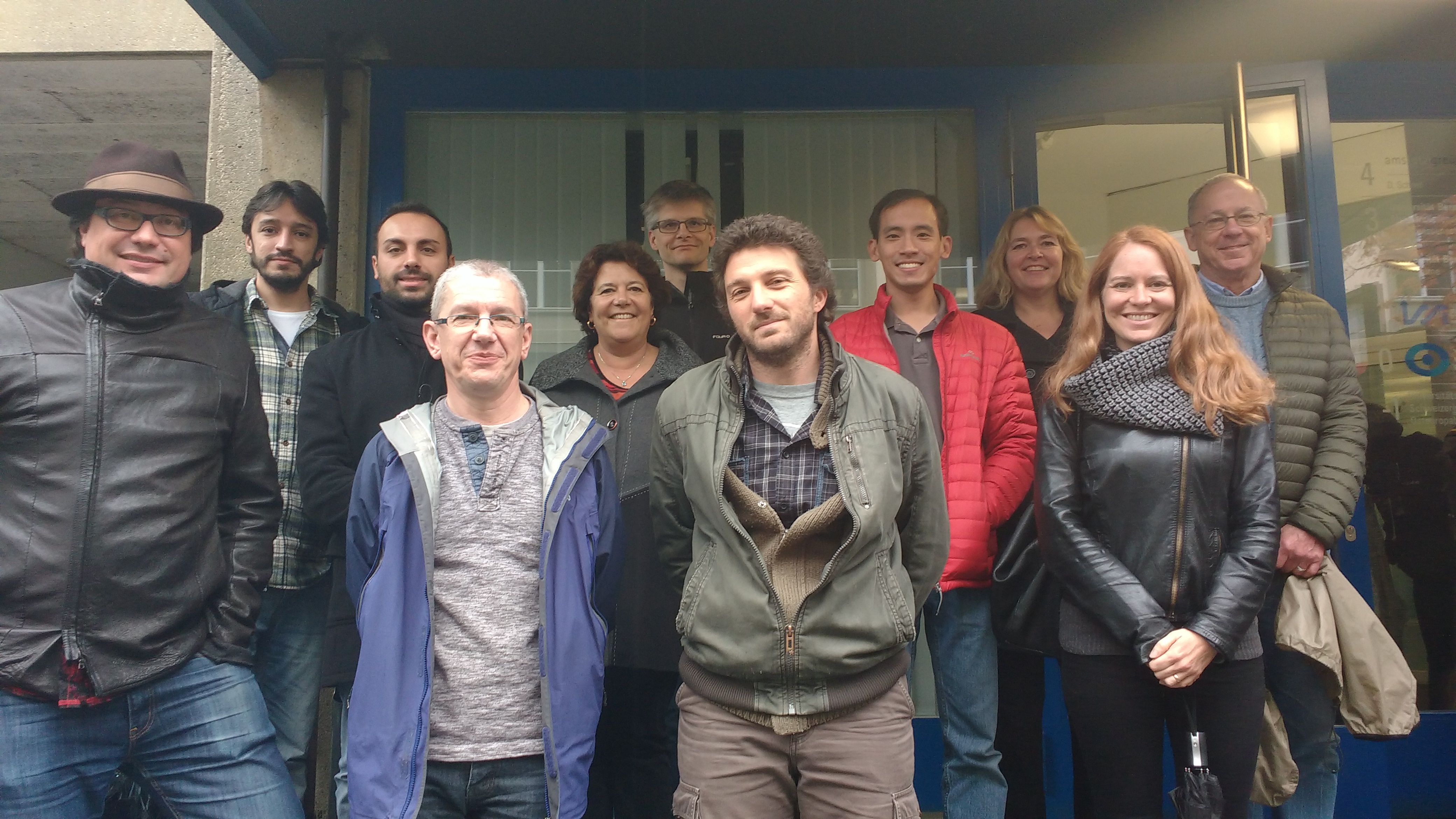

| Home | Members | First Meeting | Meeting 2 | Team private |

 |  |
Solar flares have paradigmatic status for studies of explosive plasma processes in astrophysics. Particle acceleration is a key ingredient of these events; several tenths of the energy released from the stressed magnetic fields is converted initially into suprathermal particles. Recent years have seen our understanding of electron acceleration in flares reach a new pitch of refinement, primarily through the RHESSI mission, but the same cannot be said regarding ions interacting at the Sun. γ-rays from nuclear processes are the main source of information on fast ions at the Sun but these are not detected from all flares (due to limited sensitivity of instruments and/or intrinsic differences among flares in particle acceleration). Even when detected they only carry information on ions of energies greater than a few MeV. Basic questions remain at best incompletely answered: why do superficially similar flares differ so greatly in ion acceleration? How important are ions in the overall flare energy budget?
To address these questions and work towards a greater understanding of flare ion acceleration, we will assemble a multi-national team including expertise in solar, space, plasma, nuclear and atomic physics. We will concentrate on a couple of key areas: non-γ-ray channels for learning about flare ions, particularly in the energy range below 1 MeV/nucleon that determines the total ion energy content (energetic neutrons, energetic neutral atoms, Doppler-shifted charge exchange lines); multi-wavelength context studies that will define key determinants of flare ion acceleration, and thus its relationship to the primary energy release process. These studies will also address the link between ions at the flare site and ions in the interplanetary medium. We will draw on observations from RHESSI, Fermi, SDO and other recent experiments, aiming to exploit existing observations fully, to identify any promising new observational techniques and to determine what new instrumental advances will be needed for real progress.
| Federico Benvenuto | Mathematics Department, Università di Genova | Italy |
| Christina Cohen | California Institute of Technology | USA |
| Nicole Duncan | Space Sciences Laboratory, University of California, Berkeley | USA |
| Luis Fernandez Menchero | Drake University | USA |
| Hugh Hudson | School of Physics and Astronomy, University of Glasgow | UK |
| Säm Krucker | Hochschule für Technik, Fachhochschule Nordwestschweiz | Switzerland |
| Alec MacKinnon | School of Physics and Astronomy, University of Glasgow | UK |
| Melissa Pesce Rollins | W.W. Hansen Experimental Physics Laboratory, Stanford University | USA |
| Albert Shih | NASA Goddard Space Flight Center | USA |
| Paulo Simões | School of Physics and Astronomy, University of Glasgow | UK |
| Rami Vainio | Department of Physics and Astronomy, University of Turku | Finland |
| Nicole Vilmer | Observatoire de Paris, Meudon | France |
| Pietro Zucca | Observatoire de Paris, Meudon | France |
